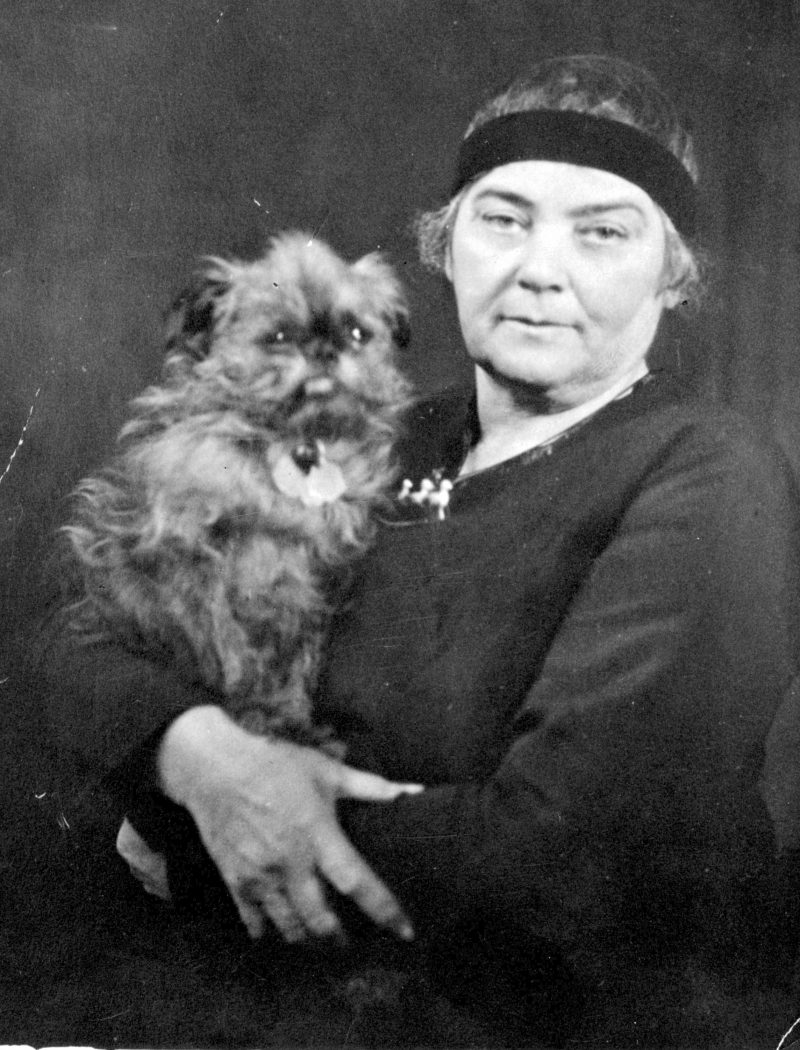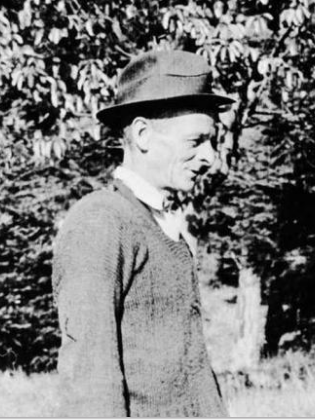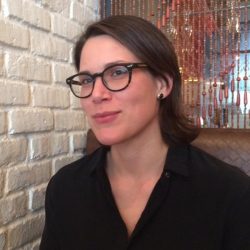#95 Wolfgang meets Emily
I Had an Interesting French Artist to See Me This Summer: Emily Carr and Wolfgang Paalen in British Columbia
by Colin Browne
Vancouver: Figure 1, in collaboration with the Vancouver Art Gallery, 2016
$24.95 / 9781927958780.
Reviewed by Elisabeth Otto
First published Feb. 27, 2017
*
Writer, documentary filmmaker, and cultural historian Colin Browne has turned his attention to the fruitful meeting, in Victoria in 1939, between Emily Carr (1871-1945) and the Austrian-Mexican Surrealist artist Wolfgang Paalen (1905-1959).

Reviewer Elisabeth Otto provides the context and consequences of this meeting of two important artists.
Paalen was en route between Hitler’s Europe and the safety of Mexico, where he was welcomed by Diego Rivera and Frida Kahlo. There, he would abandon Surrealism and influence the development of Abstract Expressionism. — Ed.
*
Accompanying last year’s exhibition at the Vancouver Art Gallery, this catalogue takes the encounter of the artist Wolfgang Paalen with Emily Carr in Victoria in 1939 as an occasion to introduce the Austrian artist to a Canadian audience.

Writer and filmmaker Colin Browne, who curated the exhibition and wrote this catalogue, takes this brief encounter to highlight their shared fascination for the landscapes and monumental art of the people of the Northwest Coast First, which together had a huge impact on both artists’ work.
This small but dense book offers a very helpful overview of the communities Carr had visited between 1907 and 1929 as a backdrop to Paalen’s journey to B.C. during the summer of 1939.
In 1907, Carr had been the first Canadian artist to take a serious interest in the Native art and sites of the Northwest Coast, decades before Edwin Holgate and Anne Savage painted on the Skeena River and north coast in the 1920s.

Browne’s curatorial essay draws a portrait of Paalen and Carr, reconstructs their encounter from sources in archives in Europe and Canada, and shows where this encounter resides in their careers.
At this time in her life, Carr had gained a national reputation through her Exhibition of Canadian West Coast Art: Native and Modern (National Gallery of Canada, 1927), and though her extensive participation in the Canadian modernist project led, in central Canada, by the Group of Seven.
By 1939, when Paalen paid his pilgrimage to her in Victoria, Carr had entered the last phase of her career. They were introduced by Carr’s friend, the anthropologist William (Willie or Billy) Newcombe (1884-1960), and Paalen was also in contact with the ethnographer Marius Barbeau at the National Museum in Ottawa.
In 1939, due to her declining health after a first stroke in 1937, Carr was unfit to travel and was turning her interest towards writing; her first book, Klee Wyck, would be published in 1941.
Paalen was at a completely different point in his life and career. As an Austrian in Paris in the late 1920s, he had become acquainted with modernist painting through his studies with Fernand Léger, and he had been introduced to the native art and material culture of the Northwest Coast through Surrealism.
Like André Breton and other surrealists, Paalen started to collect shamanic charms, ceremonial regalia, and carved painted wood objects, including a small Northwest Coast totem pole that he found in a Parisian shop.
While still in Europe, Paalen had developed an imaginary vision of Northwest Coast art and mythology that he would translate and incorporate into a technique he called fumage – or soot painting, in which smoke from a candle was transferred to paper or canvass.
At first, Paalen saw Northwest Coast material culture as a collection of surrealist objects, but when he came into direct contact with Native art on his travels on coastal B.C., he would situate these disparate objects more fully into Northwest Coast communities, myths, and belief systems.
Following his visit to B.C., Paalen left for Mexico where he found a second home at the outbreak of the Second World War. Browne shows that his trip to British Columbia affected Paalen’s artistic production and his writing, namely through his art magazine and journal Dyn, which he started in Mexico in 1942.

The correspondence of Paalen and Newcombe from August 1939 up to January 1945, printed in this catalogue, is an appropriate starting point for any further research on Paalen’s continuing contact with B.C. and a valuable account of the long history of close collaboration between ethnographers and artists in the Northwest Coast region.
Colin Browne’s selection of works by Carr and Paalen in the exhibit (which unfortunately I didn’t have the chance to visit), and in this book, shows a great sensitivity for their respective work and their artistic borrowings from the Indigenous cultures of the Northwest Coast.
By juxtaposing early and late works from Emily Carr and Wolfgang Paalen, Browne was able to link two artists from different cultures and generations through their intrinsic sensibility to the underlying forces of Indigenous art.
Having been educated in the tradition of French avant-garde art — Carr during her Paris sojourn in 1910-11 and Paalen in the late 1920s – both artists shared the conviction that Western art could only gain by the close study of Indigenous art.
And yet one should not forget that the intentions of Carr and Paalen were fundamentally different: whereas Carr depicted and interpreted the outer images of the Native heritage of coastal British Columbia, Paalen recognized in the art of the Northwest Coast the inner images of his own unconscious mind, a process he embarked on while still in Europe.
While I Had an Interesting French Artist to See Me doesn’t shed much new light on Carr, it does enable Browne to affirm her importance for contemporary international scholars, artists, and ethnographers alike, including Newcombe and Mark Tobey in the 1920s and Paalen in the 1930s.
*

Elisabeth Otto is currently working on a dissertation titled Art Histories of Unlearning: Emily Carr (1871-1945) and Gabriele Münter (1877-1962). After completing an M.A. in Business Administration, she studied art history, archaeology, and philosophy in Regensburg, Munich, and Montreal. Otto was a Fellow in Canadian Art at the National Gallery of Canada during the first year of her Ph.D. program at the Université de Montréal. In addition to conducting research on women artists, twentieth century Primitivism, and contemporary Indigenous women artists, she is interested in the interrelations between European and North American art and art histories, particularly in the mobility of artists, art historians, and aesthetic concepts.
*
The Ormsby Review. More Books. More Reviews. More Often.
Publisher and Editor: Richard Mackie
The Ormsby Review is a journal service for in-depth coverage of BC books and authors in all fields and genres. The Advisory Board consists of Jean Barman, Wade Davis, Robin Fisher, Cole Harris, Hugh Johnston, Kathy Mezei, Patricia Roy, Maria Tippett, and Graeme Wynn. Scholarly Patron: SFU Graduate Liberal Studies. Honorary Patron: Yosef Wosk. Provincial Government Patron since September 2018: Creative BC
“Only connect.” – E.M. Forster
One comment on “#95 Wolfgang meets Emily”
Comments are closed.